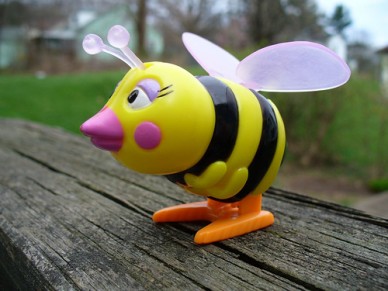
While Brooklyn’s bees are getting into maraschino cherry juice and producing inedible, sickly-red honey, bees in New England may be showing the way to a less petroleum-dependent future. Colletes inaequalis, a solitary ground-dwelling bee, lines its nest with a cellophane-like substance it makes from pollen. Materials scientist Debbie Chachra of the Franklin M. Olin College of Engineering in Needham, Massachusetts, is studying the insect’s ability to produce this durable polymer. As Geoff Manaugh speculates in his piece on Chachra’s research for the end-of-year edition of Wired UK, perhaps one day we’ll use bees as living 3-D printers to produce long-lasting, oil-free materials. Just keep them away from those nasty green cherries, please.
 Gearfuse Technology, Science, Culture & More
Gearfuse Technology, Science, Culture & More



Too bad all the bees are dying from CCD. Maybe we should be trying to solve that problem before thinking of ways to exploit more and more from nature.
It’s true that Colony Collapse Disorder is a hugely worrisome problem�ditto taking care when it comes to exploiting nature�but CCD doesn’t affect these solitary, ground-dwelling bees. It might be useful to discover a chemical-engineering analogue to the bees’ plastic-like material in order to reduce the proliferation of toxic chemicals associated with the manufacture, use, and breakdown of petroleum-based plastics. Which would be a win for nature, anon, don’t you think?